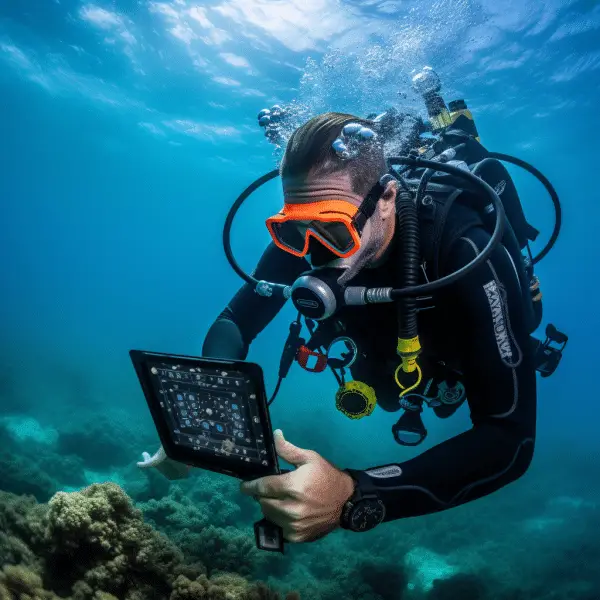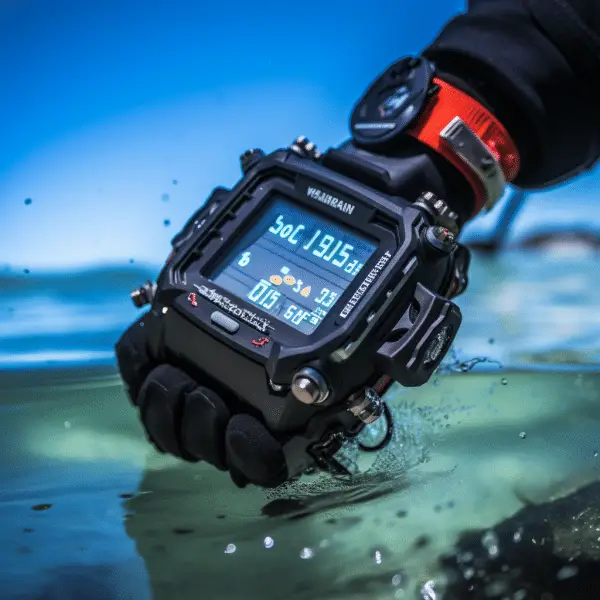Welcome to my comprehensive guide on the best dive computers for beginners in 2021. Whether you’re just starting your diving journey or looking for an upgrade, choosing the right dive computer is essential for a safe and enjoyable experience underwater.
In this article, I will provide you with an expert buying guide to help you make an informed decision. I have analyzed and tested various dive computers to identify the top options specifically tailored for beginners. Rest assured, you’ll find the perfect dive computer that suits your needs and enhances your diving adventures.
Key Takeaways:
- Best dive computers for beginners offer user-friendly interfaces and easy navigation.
- Clear and readable displays are crucial both on the surface and underwater.
- Comprehensive dive data, such as depth, time, and no-decompression limits, is essential.
- Access to alternate dive screen data and surface interval information improves functionality.
- Consider safety-stop performance, onboard log data, and battery life for a seamless diving experience.
Now that we’ve laid the groundwork, let’s dive into the details and explore the key features to consider when choosing a dive computer for beginners.
Key Features to Consider when Choosing a Dive Computer for Beginners
When it comes to selecting a dive computer for beginners, it’s crucial to consider certain key features that can enhance the diving experience. These features ensure ease of use, safety, and access to important dive data. Here are some key considerations:
1. User-Friendly Interface
A user-friendly interface is essential for beginners. Look for dive computers with intuitive menus and easy navigation. This allows for effortless operation and quick access to important functions during dives.
2. Clear and Readable Display
A clear and readable display is vital for both surface and underwater use. Opt for dive computers with high-contrast screens and large, easy-to-read digits. This ensures clear visibility of dive data, even in challenging underwater conditions.
3. Comprehensive Dive Data
Beginners should prioritize dive computers that provide comprehensive dive data, including depth, time, and no-decompression limits. Access to alternate dive screen data and surface interval information is also beneficial for a well-rounded diving experience.
4. Safety-Stop Performance
Ensure the dive computer you choose has reliable safety-stop performance. Look for features like visual and audible alarms to alert you when it’s time to make safety stops during ascent. These safety features help reduce the risk of decompression sickness.
5. Onboard Log Data and Battery Life
Consider dive computers that offer onboard log data storage, allowing you to review and analyze your dives later. Additionally, check for long battery life to ensure your dive computer lasts throughout multiple dives without needing frequent recharging or battery replacement.
6. Durability and Water Resistance

Make sure the dive computer is built to withstand the underwater environment. Look for a sturdy design that is water-resistant to a suitable depth. This ensures your dive computer can handle the rigors of diving and withstand accidental water exposure.
By considering these key features when choosing a dive computer for beginners, you can find a reliable and user-friendly device that enhances your diving adventures. Remember to also take into account personal preferences and budget to make the best choice for your needs.
Conclusion
Choosing the best dive computer for beginners can be a challenging task, but armed with the right information, the process becomes much easier. After conducting extensive testing, the ScubaLab team recommended several dive computers that excel in terms of user-friendliness, display clarity, and comprehensive dive data. These dive computers include the Aqualung i330R, Cressi Donatello, Seac Screen, Tusa TC1, and Atmos Mission One.
Not only do these dive computers offer intuitive interfaces and easy navigation, but they also feature clear and readable displays, ensuring that new divers can access vital information both on the surface and underwater. With comprehensive dive data like depth, time, and no-decompression limits, beginners can monitor their dives effectively. Additionally, the ability to access alternate dive screen data and surface interval information enhances convenience and safety.
What sets these recommended dive computers apart is their affordability. They provide new divers with access to high-quality and reliable equipment without breaking the bank. By carefully considering the key features outlined in this guide, taking personal preferences and budget into account, beginners can confidently choose the best dive computer to accompany them on their underwater adventures.
FAQ
What factors were considered when selecting the best dive computers for beginners?
The ScubaLab team evaluated the ease of operation, display visibility, dive data presentation, safety features, and overall ergonomics of each dive computer.
Which dive computers were recommended for beginners?
The Aqualung i330R, Cressi Donatello, Seac Screen, Tusa TC1, and Atmos Mission One were among the dive computers recommended for beginners.
What are the key features to consider when choosing a dive computer for beginners?
It is important to consider a user-friendly interface, clear and readable display, comprehensive dive data, easy access to alternate dive screen data and surface interval information, safety-stop performance, onboard log data, and battery life.
How can beginners find the best dive computer for their needs?
By considering the key features mentioned above, personal preferences, and budget, beginners can find the perfect dive computer to enhance their underwater adventures.
